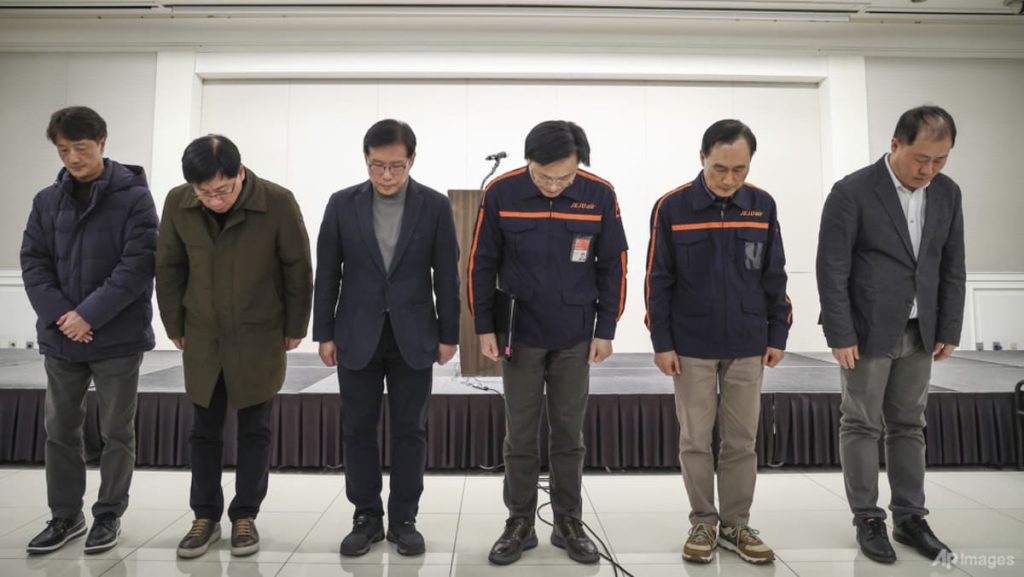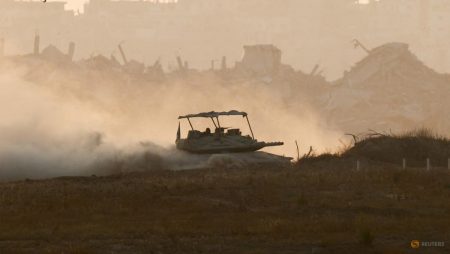The tragic crash of a Jeju Air Boeing 737-800 aircraft at Muan Airport, located approximately 288 kilometers southwest of Seoul, South Korea, has left 124 people dead and only two survivors, both flight attendants. The aircraft, carrying 175 passengers, including two Thai nationals, and six crew members, met its devastating end after colliding with a wall shortly after attempting a landing. The impact of the collision resulted in the near-complete destruction of the aircraft, leaving a scene of charred wreckage and posing significant challenges to the identification and recovery of the deceased. Families gathered at the airport, grappling with the devastating news and mourning the loss of their loved ones. Authorities, including the fire department and the Ministry of Land, have launched a thorough investigation to determine the exact cause of the accident.
The sequence of events leading up to the crash unfolded rapidly. According to the Ministry of Land, the control tower issued a bird strike warning to the aircraft. Approximately three minutes later, the plane attempted to land again, only to tragically veer off the runway and collide with a wall. Two minutes prior to the impact, the pilot issued a Mayday call, indicating a critical emergency. The brevity of the timeframe between the bird strike warning and the crash highlights the swiftness with which the situation deteriorated. The scene at the airport was one of devastation, with the burned-out wreckage of the Boeing 737-800 strewn across the runway. Firefighters and emergency vehicles worked diligently amidst the debris, attempting to recover remains and secure the site.
While the investigation is still ongoing, preliminary assessments point towards a combination of factors contributing to the accident. Lee Jeong-hyun, chief of Muan fire station, suggested that a bird strike, coupled with unfavorable weather conditions, may have played a significant role in the crash. However, a definitive conclusion will be reached only after a comprehensive joint investigation is conducted. Authorities have ruled out the possibility of the runway length being a contributing factor. At 2,800 meters, the runway is considered sufficient for aircraft of similar size, which have operated there without incident in the past.
The devastating loss of life has deeply impacted families who were gathered at the airport awaiting news. Overwhelmed with grief, many were seen crying in despair as the grim reality of the situation unfolded. The sheer magnitude of the tragedy has left a profound sense of sorrow and loss within the community. In the wake of the accident, Jeju Air, the low-cost carrier operating the flight, issued a heartfelt apology and pledged to provide full support to the affected families. The airline expressed sincere regret for the immense suffering caused by the accident and committed to taking all necessary measures to assist those impacted by the tragedy.
Boeing, the manufacturer of the 737-800 aircraft, also expressed its condolences and offered support to Jeju Air in the aftermath of the accident. The company acknowledged the gravity of the situation and pledged to collaborate with the airline and investigative authorities to determine the cause of the crash. This collaborative approach underscores the importance of a thorough investigation to gain a comprehensive understanding of the factors that led to the tragic event and to prevent similar incidents from occurring in the future. The aviation industry as a whole is deeply affected by such accidents, and the shared commitment to safety and thorough investigation is crucial for maintaining public trust and ensuring the continuous improvement of aviation safety protocols.
The recovery and identification process remains a complex and time-consuming undertaking due to the extensive damage to the aircraft and the tragic loss of life. Authorities are working meticulously to locate and recover the remains of the victims, employing forensic techniques and meticulous procedures to ensure proper identification. This painstaking process is essential for providing closure to grieving families and for accurately accounting for all those on board the ill-fated flight. The dedication of the recovery teams reflects the deep respect for the victims and their families, and their unwavering commitment to providing answers and closure amidst this unimaginable tragedy. The full scope of the accident’s impact will continue to unfold as the investigation progresses, and the aviation community, along with the families of the victims, mourns the profound loss of life.










